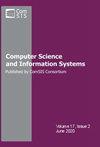新的以太坊请求意见提案,以支持不可替代代币的部分所有权
IF 1.2
4区 计算机科学
Q4 COMPUTER SCIENCE, INFORMATION SYSTEMS
引用次数: 0
摘要
在过去的几年里,除了加密货币之外,不可替代的代币成为区块链技术最突出的实现。这主要是由于它们最近与数字艺术的联系,但自区块链2.0出现以来,不可替代代币的应用一直是研究人员关注的焦点。它通常与区块链技术在一些实际应用(如土地管理、医疗保健或供应链管理)中的可能应用的研究紧密结合在一起。自2015年以太坊区块链首次发布以来,到2022年,已经创建了超过4400万个智能合约,在那些仍然活跃的智能合约中,超过70%是基于一些突出的模板。在以太坊区块链中,不可替代代币的创建通常基于以太坊请求评论721。在本文中,作者建议创建一个新标准,以支持不可替代代币的23部分所有权。部分所有权是必要的,因此24个不可替代的代币和区块链技术可以应用于更广泛的25个用例。本文还介绍了在Solidity编程语言中可能实现新提出的标准的示例。本文章由计算机程序翻译,如有差异,请以英文原文为准。
The proposal of new Ethereum request for comments for supporting fractional ownership of non-fungible tokens
During the last couple of years, non-fungible tokens became the most prominent implementation of blockchain technology apart from cryptocurrencies. This is mainly due to their recent association with digital art, but the application of non-fungible tokens has been in the focus of researchers since the appearance of Blockchain 2.0. It was usually tightly coupled with the research on possible applications of blockchain technology in some real-life applications, such as land administration, healthcare, or supply chain management. Since the initial release of the Ethereum blockchain in 2015, until 2022, more than 44 million smart contracts have been created, and out of those that are still active, more than 70% are based on some prominent templates. In the Ethereum blockchain, the creation of non fungible tokens is usually based on Ethereum Request for Comments 721. In this paper, the authors are proposing the creation of a new standard that would support 23 fractional ownership of non-fungible tokens. Fractional ownership is necessary so 24 non-fungible tokens and blockchain technology could be applied to an even wider 25 number of use cases. This paper also presents an example of a possible implementation of the newly proposed standard in the Solidity programming language.
求助全文
通过发布文献求助,成功后即可免费获取论文全文。
去求助
来源期刊

Computer Science and Information Systems
COMPUTER SCIENCE, INFORMATION SYSTEMS-COMPUTER SCIENCE, SOFTWARE ENGINEERING
CiteScore
2.30
自引率
21.40%
发文量
76
审稿时长
7.5 months
期刊介绍:
About the journal
Home page
Contact information
Aims and scope
Indexing information
Editorial policies
ComSIS consortium
Journal boards
Managing board
For authors
Information for contributors
Paper submission
Article submission through OJS
Copyright transfer form
Download section
For readers
Forthcoming articles
Current issue
Archive
Subscription
For reviewers
View and review submissions
News
Journal''s Facebook page
Call for special issue
New issue notification
Aims and scope
Computer Science and Information Systems (ComSIS) is an international refereed journal, published in Serbia. The objective of ComSIS is to communicate important research and development results in the areas of computer science, software engineering, and information systems.
 求助内容:
求助内容: 应助结果提醒方式:
应助结果提醒方式:


